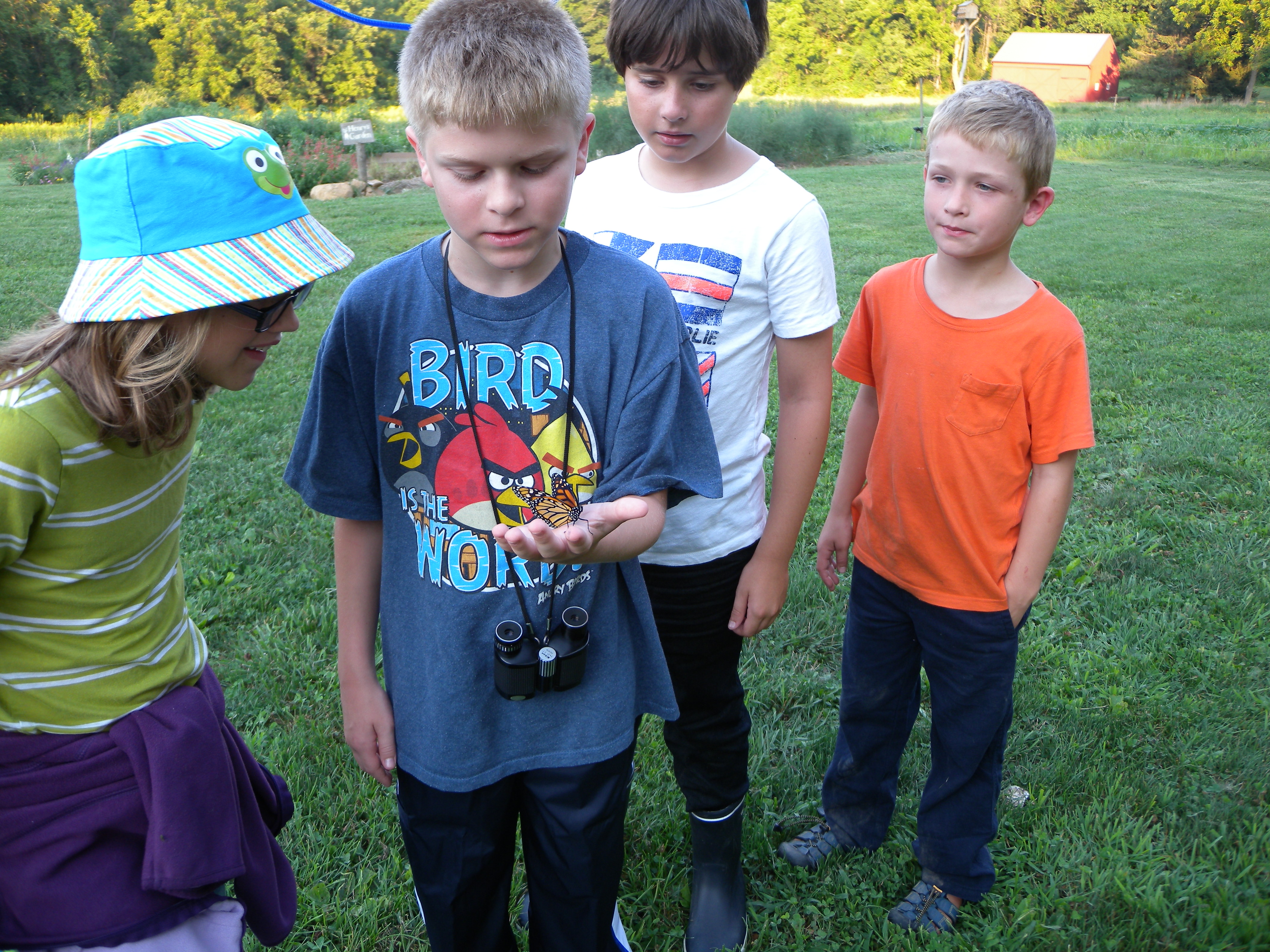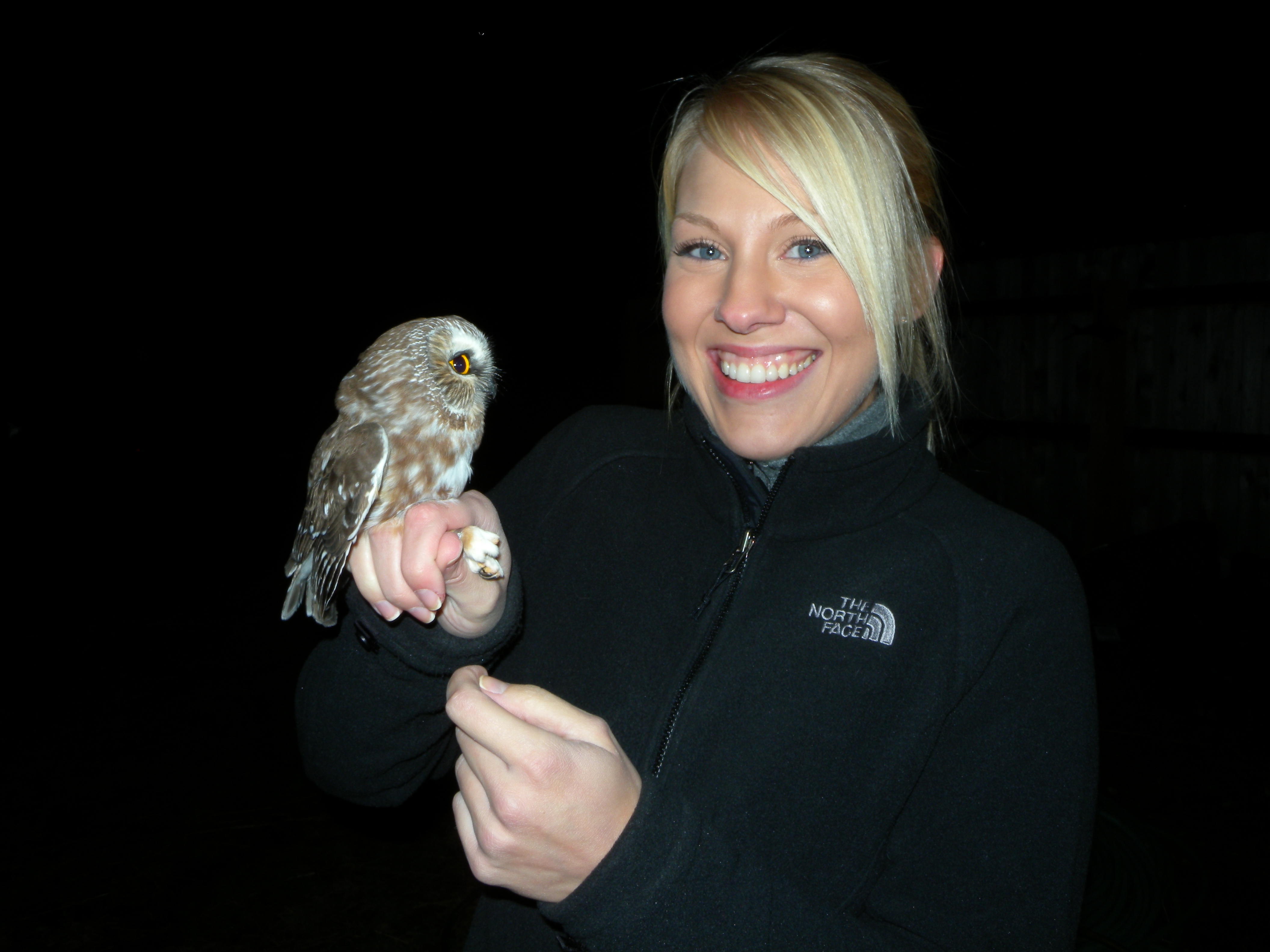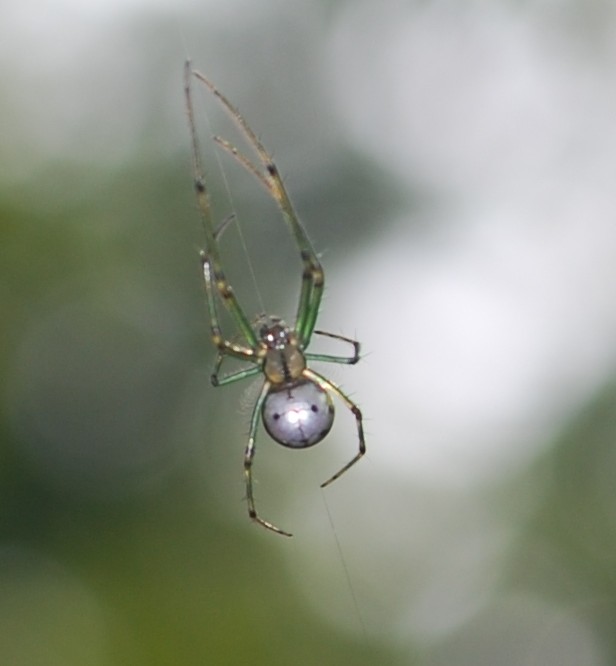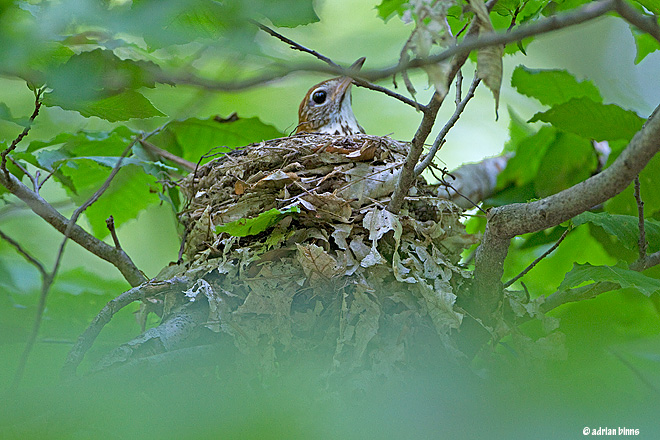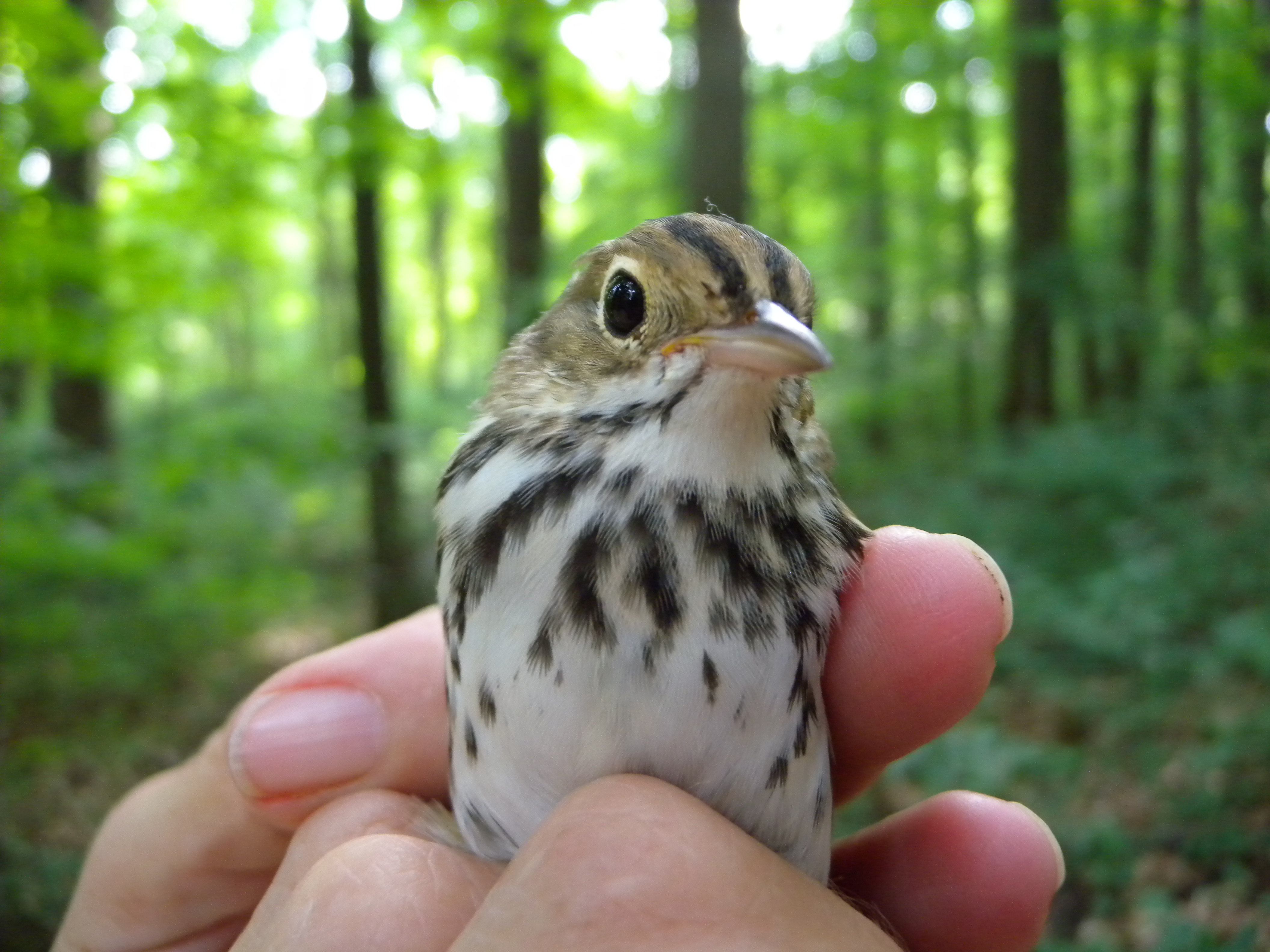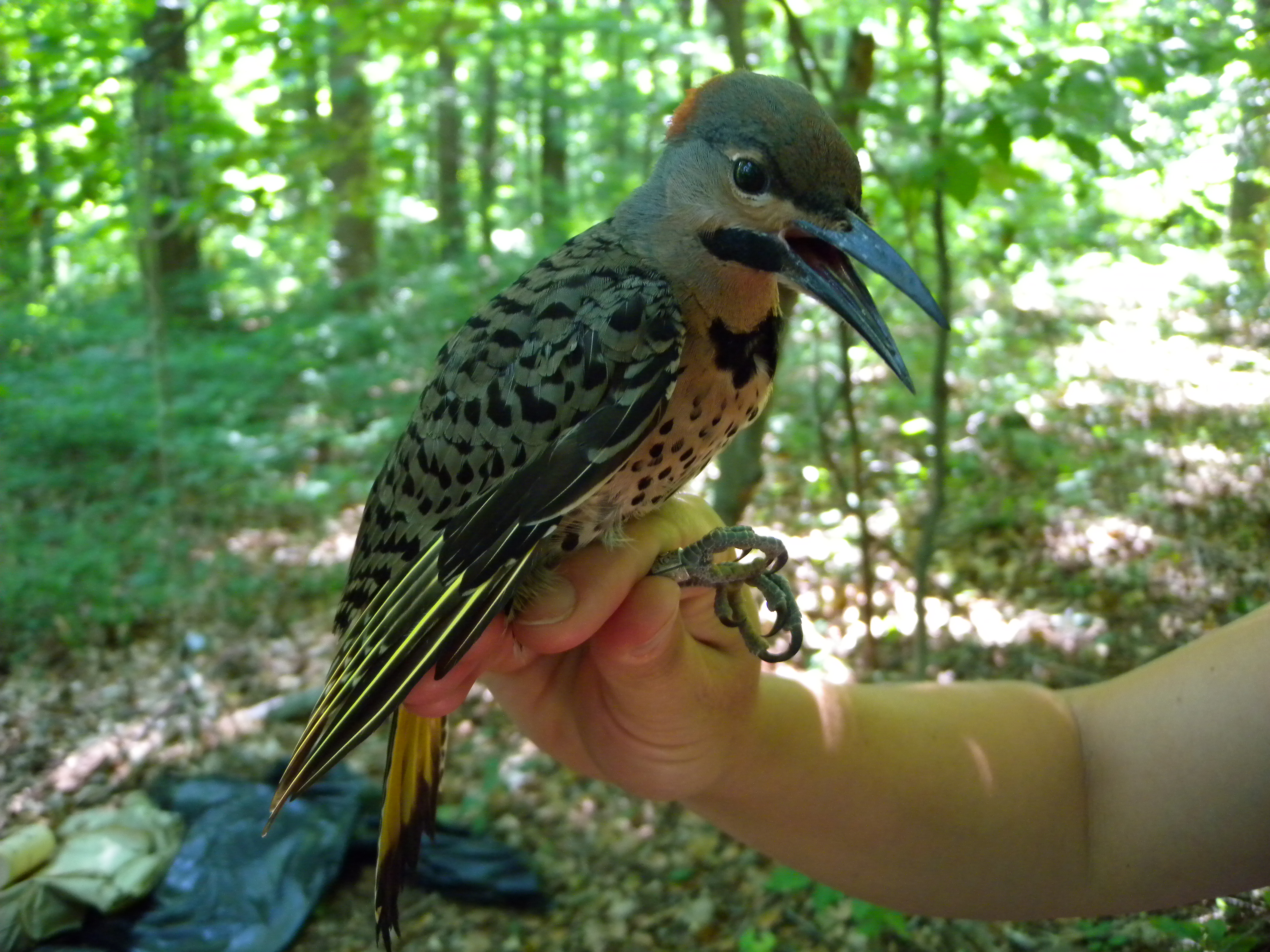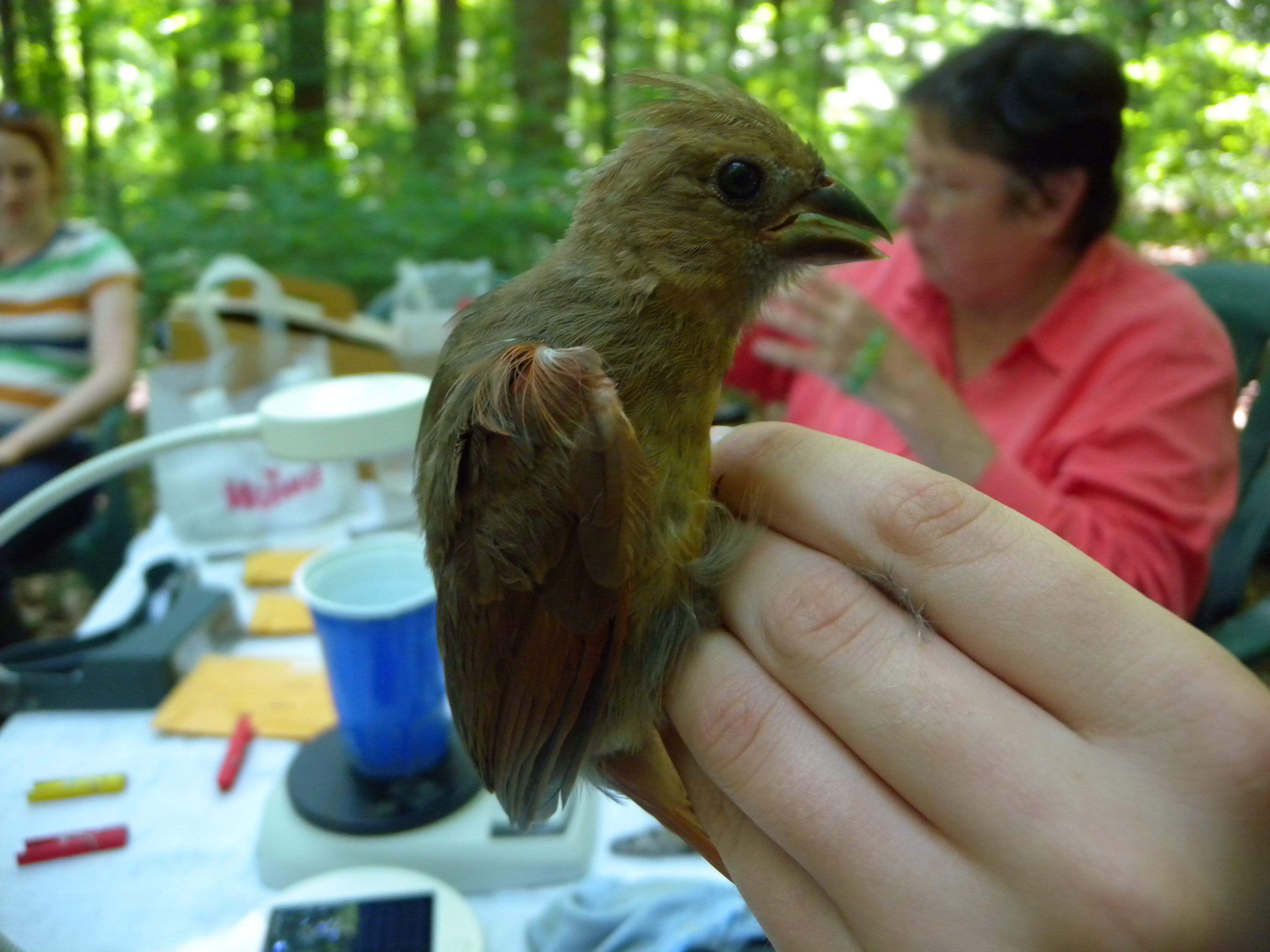
Last week was the first official week of Rushton’s fall 2012 public banding season. The rain prevented us from banding on Tuesday, but the rest of the week was fantastic! Between last week and the week before (the last week of August), we have been averaging 45 birds per day of about 13 different species each day. Our most common southbound species include Common Yellowthroat, Gray Catbird, Ovenbird, and House Wren. Resident species (those that do not migrate) have included Northern Cardinal, Carolina Wren, Downy Woodpecker, Song Sparrow, and Northern Flicker (some do migrate). The American Goldfinches are all over the place feeding on the thistle, but they have not hopped into our nets yet! Instead, a few obliging female Indigo buntings picked up the slack and got in line to get their “bracelets” before their sojourn.

As for the warblers, those “butterflies of the bird world”, we have banded a stunning array so far. Species included Black-and-white Warbler, Chestnut-sided Warbler, Northern Waterthrush (not a thrush at all), Magnolia Warbler, American Redstart, Canada Warbler, and Black-throated Blue Warbler.

Uncommon birds included a Connecticut Warbler and Mourning Warbler, both of which were young hatch year birds and looked very similar! The Connecticut Warbler is the more elusive of the two, evading more birders’ life lists than the Mourning, partly because of its habit of foraging in low, dense undergrowth during migration. It breeds in open larch-spruce bogs in the north and winters in the tropics.


The Mourning Warbler is more common within its range than the Connecticut Warbler, but also tends to remain hidden in thick vegetation. The Mourning Warbler has a darker gray hood than the Connecticut and a broken rather than complete eyering.

Another uncommon, low lying, hard-to-find warbler that we caught last week was the Kentucky Warbler, and not just ANY Kentucky Warbler. It was the SAME one we banded this summer in Rushton Woods! A young male! We have no way of knowing whether he bred successfully or at all, but we know he’s alive and preparing for his trip to Central or South America! This is grand news. The Kentucky Warbler is declining throughout much of its range because it needs healthy native understory as opposed to understory invaded by multiflora rose and other invasive plants, so the fact that our bird seems healthy after a summer at Rushton is good. Hopefully a female will join him next year….

Last but not least, we banded Rushton’s very first Yellow-bellied Flycatcher on August 29th! This is BIG NEWS! This is a very cryptic, secretive bird that is uncommon during migration in our area. It is a rare breeder in isolated mountain-top bogs in northcentral PA, but otherwise breeds in boreal forests and bogs of Canada. This flycatcher winters in semi-open habitats of Central America and has been found in higher densities on shade-grown coffee plantations than sun-grown.

Switch over to shade-grown coffee , if you haven’t already, to promote habitat for birds. Check out Birds-and-Beans or Golden Valley Farms Coffee Roasters right in West Chester! It even tastes better than sun-grown coffee because the coffee cherries ripen slower in the shade, thus allowing more subtle flavors to develop.

The Open House at the banding station this weekend was fun and educational for all! There were about as many people as birds, 50 and 50. The highlight bird species banded were of course the crowd-pleasing Carolina Chickadee and three young, molting Field Sparrows born this year! The Field Sparrows were all in the same net together so they were obviously sticking together on their dispersal adventure. We made sure to release them all at the same time, and they flew off together into the fields of goldenrod. Field Sparrows are declining throughout their range due to their grassland and field habitats disappearing. The fact that we have them breeding here is another toast to the Willistown Conservation Trust’s land preservation efforts!


Remember that all are invited to Rushton Woods banding station every Tuesday and Thursday throughout September and October to observe songbird banding. Nets go up at 6am and we band until 11am. No banding if it’s raining! We expect to start getting more Wood Thrush, Veery and other thrushes. Then come the White-throated sparrows and juncos!

Many species of butterflies are also everywhere at Rushton nectaring from the thistle and goldenrod. Hawk Mountain reported a 1-day record for Monarch migration on September 4th; the hawk counters counted 883 monarchs floating past them on the ridge between 2 and 4 pm!

PA Young Birders, don’t forget to register for the ABA Mid-Atlantic Young Birder Conference, September 22. It’s at the Ashland Nature Center in Hockessin, DE and should be a great day of birding instruction, distinguished speakers, bird study skins and more!! Click here for more information and to register.
There’s a lot going on in the woods and in the field,
~Blake












